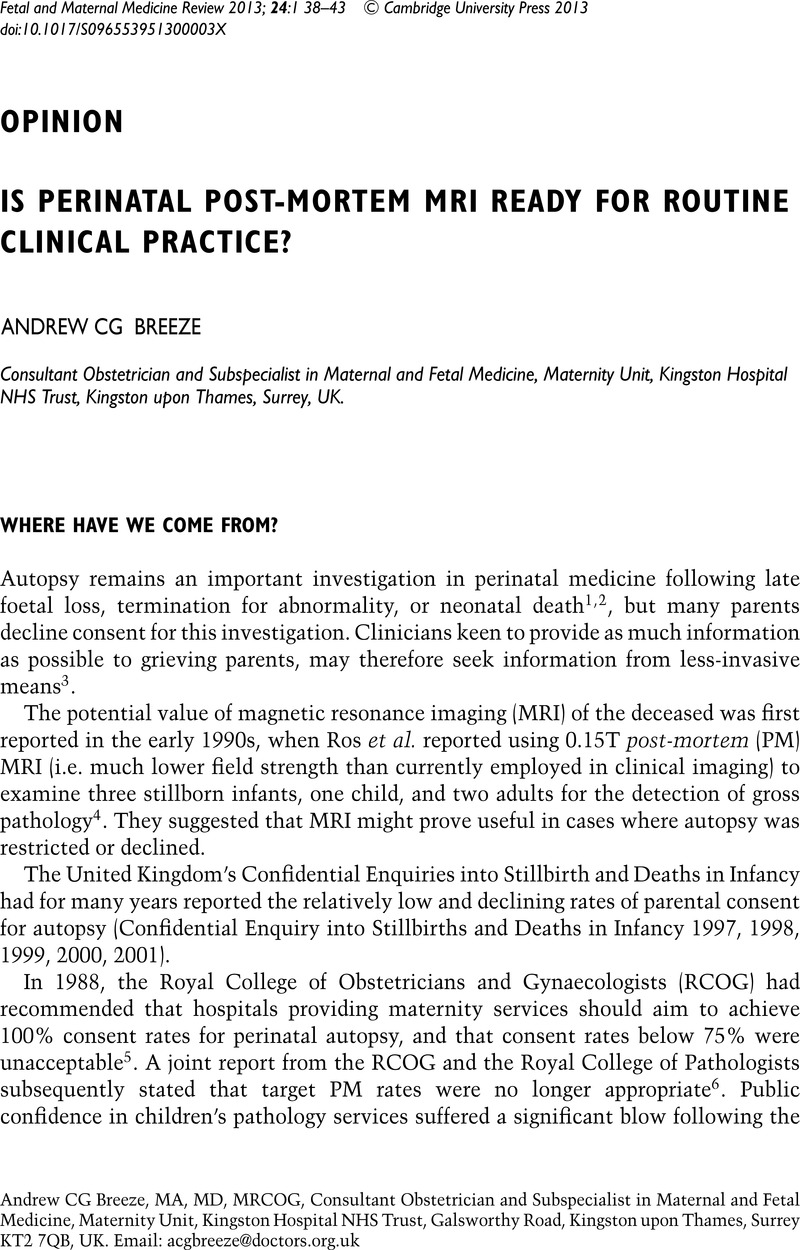Crossref Citations
This article has been cited by the following publications. This list is generated based on data provided by Crossref.
ARTHURS, O J
TAYLOR, A M
and
SEBIRE, N J
2013.
THE LESS-INVASIVE PERINATAL AUTOPSY: CURRENT STATUS AND FUTURE DIRECTIONS.
Fetal and Maternal Medicine Review,
Vol. 24,
Issue. 2,
p.
45.
Shruthi, M.
Gupta, N.
Jana, M.
Mridha, A. R.
Kumar, A.
Agarwal, R.
Sharma, R.
Deka, D.
Gupta, A. K.
and
Kabra, M.
2018.
Conventional vs virtual autopsy with postmortem MRI in phenotypic characterization of stillbirths and fetal malformations.
Ultrasound in Obstetrics & Gynecology,
Vol. 51,
Issue. 2,
p.
236.





